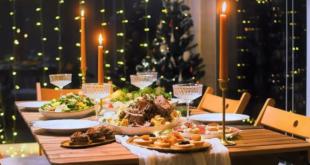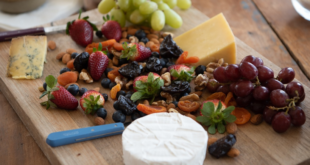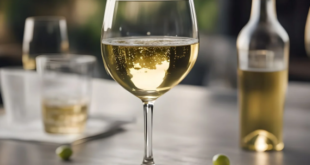What is a good wine? If you like a wine, whether it costs five or twenty pounds, it’s good!
Like most things, wine is a personal choice, the challenge is to find what you consider is a good wine.
Variety
There are thousand of types of wines available, even wines from the same grape or region can vary widely. There are no hard and fast rules, it’s basically down to what you like, here though are some tips on finding your good wine.
Taste
Firstly, decide on what wine type you are looking for. Do you want a red, white, sparkling, dessert or fortified wine? This will narrow down your choices and give you some direction in recognising what you like.
Think about the kind of tastes you like in a wine. Compare the different wine characteristics with your own tastes. Do you prefer dry or sweet wine? Below is a list of wine characteristics to help you in your comparative wine tasting.
Low Tannins or High Tannins
Tannins are important in wines, especially red wines. The tannins come from the skins, stalks and pips of grapes. Tannins in a young wine produce a bitter, puckering taste on the palate.
Short Palate or Long Palate
This relates to the amount of time the sensations of taste and aroma from the wine persist after swallowing. Usually, the longer the palate the better.
Low Acid or High Acid
Various types of acid are present in wine, and are essential to the wine’s long life and enjoyment in drinking. A low acidity can affect the wine’s quality, resulting in a flatter tasting wine. A higher acidity makes the wine more tart and sour tasting. Acidity is what makes your mouth water and your lips pucker, and without it, wines taste flat. The presence of the right amount of acidity can make all other flavours in wine stand out, including traces of fruit, spices and herbs. The flavour in wine that you would describe as tangy, sharp, refreshing, bracing, bright, crisp or zingy is the acidity.
Light-bodied or Full-bodied
Light-bodied wine is delicate in body and taste. Full-bodied wine is relatively weighty on the palate. Another factor is that a wine’s body is relative to its alcohol level. On every wine label you’ll notice a percentage of alcohol by volume. Note how this applies to body: 7.5% – 10.5%; indicates light body. 10.5% – 12.5%; indicates medium body. 12.5% and over; indicates full body.
No Oak or Heavy Oak
Wines are sometimes stored in oak barrels, usually to gain extra and more complex flavours. French, American and German oak barrels are widely used in Europe and Australia. Oaky describes the aroma or taste quality of a wine, gained by the oak barrels in which it was aged. The terms toasty, vanilla, dill and smoky indicate the desirable qualities of oak; charred, burnt, green cedar, lumber and plywood describe its unpleasant side.
Price
Paying more doesn’t guarantee good. If you pay a lot for a bottle of wine and don’t feel you had value for money, you wont consider it a good wine. Price is a factor in quality, the tax on a bottle of wine is over £2, allowing for the overheads (retailers margin, packaging and transport), there isn’t much left for the winemaker in a £4 bottle of wine. Pay £5 and with the same overheads, the winemaker gets more so it is reasonable to expect a better wine. Pay £10 and you should be in a different league.
The price you are willing to pay for a bottle of wine can be a key factor in selecting a wine that is right for you. A lot of people feel that good quality wines are more expensive, however, this isn’t always the case. In today’s market there are plenty of great wines available at low prices thanks to the technology and scale some producers have adopted.
There is a premium for individuality, a small vineyard crafting wines will have costs far in excess of the mega producers of the New World.
Rest assured that you won’t have to spend a lot of money to experiment with various wines. A decent wine merchant will be able to give you plenty of suggestions in your stated price range.
Labels
Once you have established the type of wine you like, the label is a key tool in seeking out your good wines. Wine labels should be informative telling you a lot about the wine. Information such as a wine’s vintage, alcohol content, the wine’s region and even the winery it was made in. All these factors can determine whether you will like a wine and an indication of it’s taste or quality.
Vintage
Majority of wines in the store are meant to be drunk right away, so make sure the wine isn’t too old, particularly if you are buying it expecting a lively, fruity wine.
Alcohol content
Don’t assume high alcohol wines are better, some wines today contain too much alcohol, which leaves them unbalanced. Try to pick a wine that has an alcohol content no more than 12%.
Geography
The more specific the better. A wine stating it’s from Napa is probably a better bet than a wine simply saying it’s from California. Unfortunately, this will probably be reflected in the price, so this might not tell you much about value. There are legendary vineyards all over the world, land famous for producing high quality grapes. If you learn about some of these, they may help you make a decision about quality.
Estate-bottled
This means the people who made the wine also had a hand in growing the grapes on their own land. We generally find this a good sign.
Tiny details
Many small production wineries include a phone number and invitation to call their winery on the label. Some include the dates when the grapes were harvested and when the wine was bottled. Details like these make the point that these things matter to the winemaker and that they understand it has meaning for the consumer. However, expect to pay more for these “individually” rather than mass produced wines.
Merchant’s advice
It’s easy to get advice on wine before buying, you just need to ask. You can pop into your local wine shop and ask the assistant for help. At any good wine shop, they will usually ask you for a few of you’re favourite tastes and smells, or a few other similar questions, and then begin to recommend wines. Don’t be embarrassed to give a price range either. They will appreciate knowing where to start. Also, a lot of grocery stores with good wine sections are also getting into the game and hiring good help for the wine isle. Look for these people and ask them for advice.
Wine tastings
There are far fewer and cheaper ways of finding wines you like then going to wine tastings. In a lot of areas you can find low cost or even free wine tastings at local wine shops, cultural and art centres or restaurants. You can use these tastings as opportunities to eliminate wines from the buy list and add others. These events can also be very educational and a great way to meet new people.
 Vino-Club For Wine Lovers
Vino-Club For Wine Lovers






